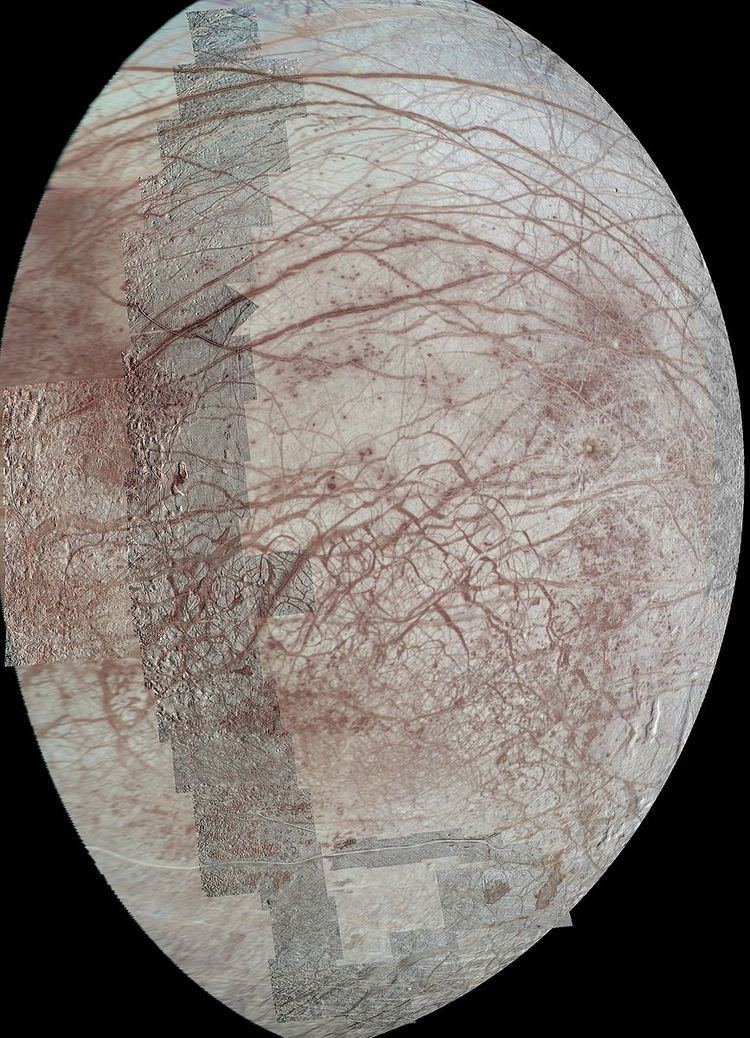Country United States Genre Astronomy | Language English | |
 | ||
Author Original title New Frontiers in the Solar System: An Integrated Exploration Strategy 2003–2013 Publisher United States National Research Council | ||
The Planetary Science Decadal Survey is a publication of the United States National Research Council produced for NASA and other United States Government Agencies such as the National Science Foundation. The document identifies key questions facing planetary science and outlines plans for space and ground based exploration ten years into the future. Missions to gather data to answer these big questions are described and prioritized, where appropriate.
Contents
2013–2022, Visions and Voyages for Planetary Science
Visions and Voyages for Planetary Science in the Decade 2013 – 2022 (2011) was published in prepublication form on March 7, 2011, and in final form later that year. Draft versions of the document were presented at town hall meetings around the country, at lunar and planetary conferences, and made available publicly on the NASA website and via the National Academies Press. The report differed from previous reports in that it included "brutally honest" budgetary review from a 3rd party contractor.
The report highlighted a new Mars rover, a mission to Jupiter's moon Europa, and a mission to Uranus and its moons as proposed Flagship Missions. The Mars mission was given highest priority, followed by the Europa mission. The Mars rover proposal was called MAX-C and it would store samples for eventual return to Earth, but the method of return was left open. It only recommended the rover mission if it could be done cheaply enough (2.5 billion USD).
The committee producing the survey was led by Steve Squyres of Cornell University and included 5 panels focusing on the inner planets (Mercury, Venus, and the Moon), Mars (not including Phobos and Deimos), the gas giant planets, satellites (Galilean satellites, Titan, and other satellites of the giant planets) and primitive bodies (Asteroids, comets, Phobos, Deimos, Pluto/Charon and other Kuiper belt objects, meteorites, and interplanetary dust).
Mission & Technology Studies:
The recommendation for the New Frontiers program was a selection from one of Comet Surface Sample Return, Lunar South Pole-Aitken Basin Sample Return, Saturn Probe, Trojan Tour and Rendezvous, and Venus In Situ Explorer. Then another selection adding Io Observer, Lunar Geophysical Network. (for NF 4 and 5) In the 2011 response from NASA to the review, NASA supported the New Frontiers recommendations. (The first three New Frontiers missions include New Horizons to Pluto flyby, the Juno Jupiter orbiter, and the OSIRIS-REx NEO sample return mission.)
For the astrophysics review see Astronomy and Astrophysics Decadal Survey.
2003–2013, New Frontiers in the Solar System
The previous study, New Frontiers in the Solar System: An Integrated Exploration Strategy 2003–2013 was published by the National Academies Press, in 2003. The committee producing the survey was led by Michael J. Belton. The 5 panels focused on the inner planets, Mars, the Giant planets, Large satellites and Astrobiology. The survey placed heavy emphasis on Mars exploration including the Mars Exploration Rovers, established of the New Frontiers program including New Horizons mission to study Pluto and established programs in power and propulsion to lay a technological basis for programs in later decades including manned missions beyond Earth orbit.
1995 to 2015, Space Science in the Twenty-First Century, Imperatives for the Decades
While not titled as a decadal survey, a planetary science plan covering 1995–2015 was published by the Space Studies Board. The report recommended a focus on "Galileo-like missions to study Saturn, Uranus and Neptune" including a mission to rendezvous with Saturn's rings and study of Titan. It also recommended study of the moon with a "Lunar Geoscience Orbiter", a network of lunar rovers and sample return from the lunar surface. The report recommended a Mercury Orbiter to study not only that planet but provide some solar study as well. A "Program of Extensive Study of Mars" beginning with Mars Pathfinder mission was planned for 1995 to be followed up by one in 1998 to return samples to Earth for study. Study of primitive bodies such a comet or asteroid was recommended as a flyby mission of Apollo and Amor asteroid.
While not a decadal survey, the 1975 Report of Space Science included the exploration of the Outer planets.
1968–1975, Planetary Exploration
Published in the summer of 1968, it reviewed past and present understanding of the Solar System and recommended several new missions. The following targets were given priority:
- Jupiter
- Mars
- Venus
- Mercury
1965, Wood's Hole Study
In the summer of 1965 the Space Science Board reviewed lunar and planetary science opportunities. Space exploration, astronomy, and the humans in space were major topics.
